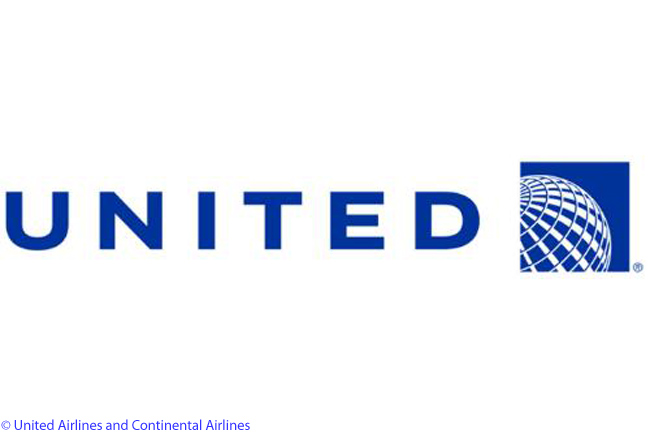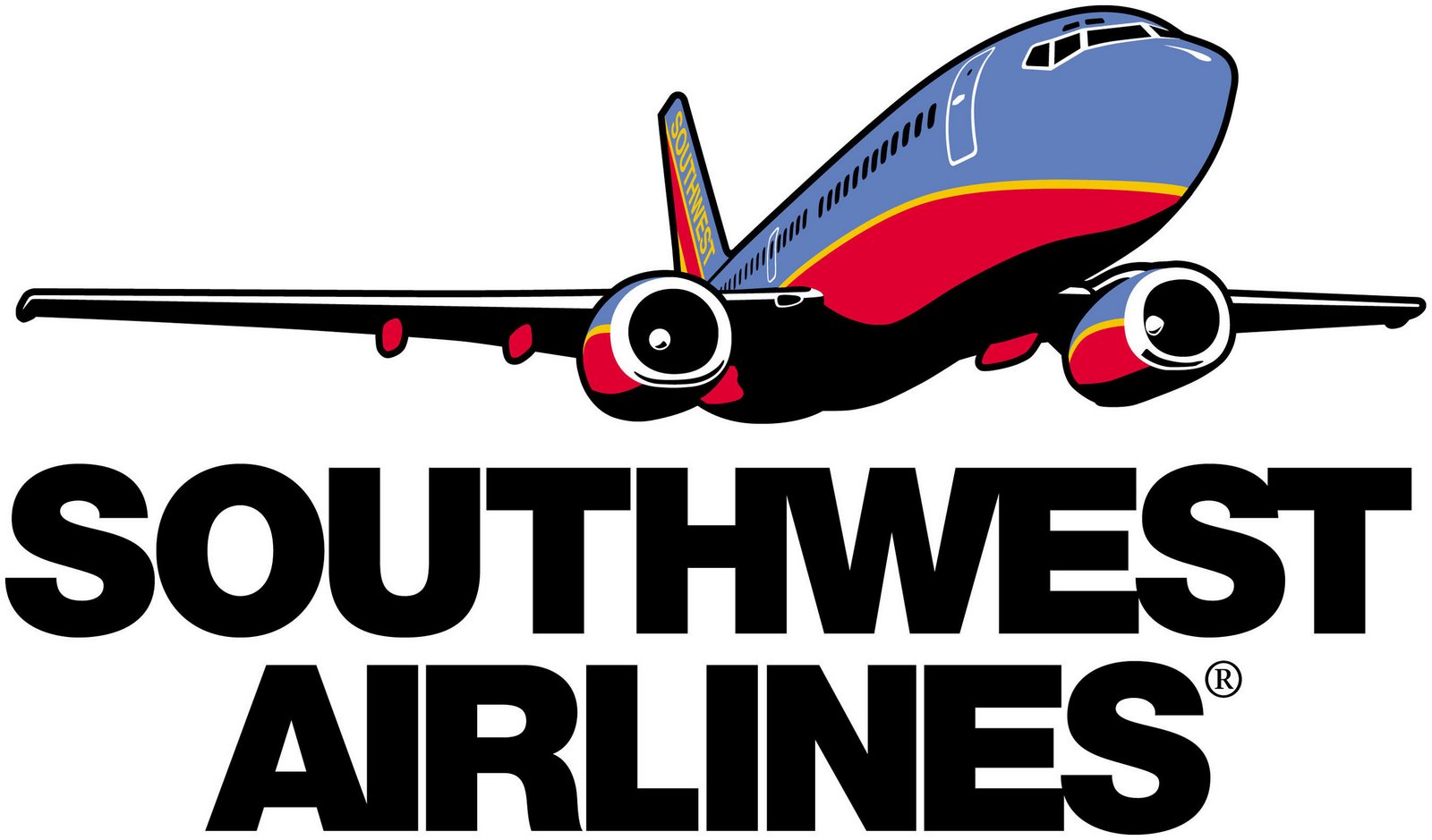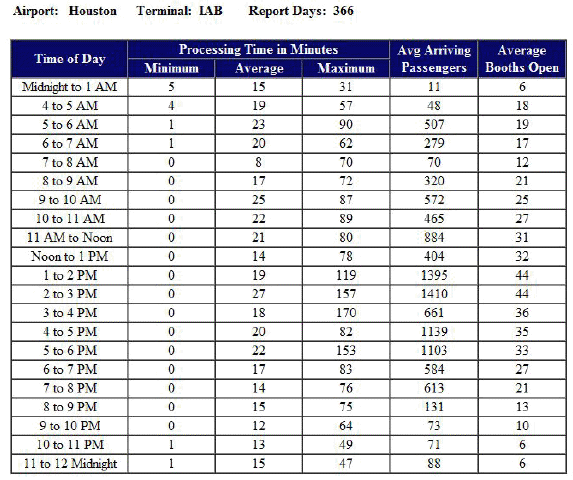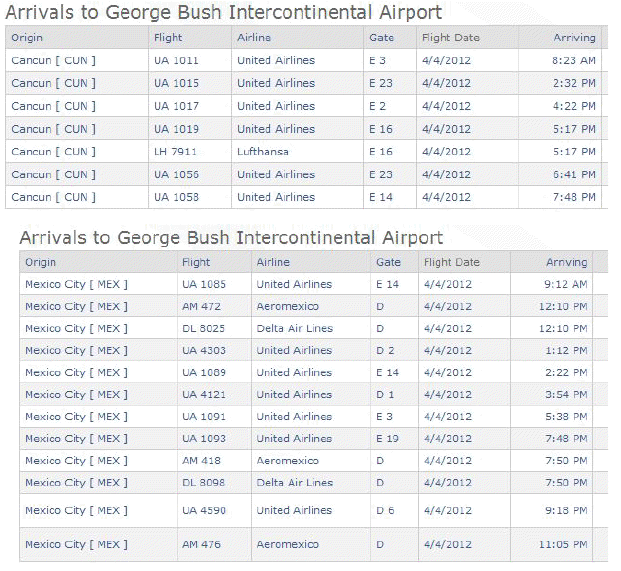There have been a few news stories of interest since we first heard about the Southwest Airlines plan for international flights at Hobby Airport, which is being vigorously opposed by United, who wants to keep IAH as the only international airport in Houston. United has a couple of Congressmen on their side.
Two local congressmen have asked Mayor Annise Parker not to turn Hobby Airport into an international operation because they are concerned Houston would not get sufficient customs staffing to avoid long delays for international travelers.
The opposition of U.S. Reps. Kevin Brady, R-The Woodlands, and Al Green, D-Houston, casts doubt on whether Houston should become a two-international-airport city, even if city-commissioned studies indicate it would be an economic boon.
In a letter sent to Parker this week, Brady and Green echo an argument made by United Airlines, which has been lobbying against the project at City Hall, saying they oppose equipping Hobby with a federal inspection services facility because they fear it will divert customs officers from Bush Intercontinental. Resulting delays, United argues, will cause international passengers to book flights through another hub.
Brady and Green argue that an international Hobby would “divert, not increase” the number of customs officers in Houston.
[…]
In his annual State of the Airports address Thursday, [Houston Airport System Director Mario] Diaz lamented what he described as persistently low customs staffing at Bush Intercontinental.
Last week, Diaz told the Houston Chronicle that if council approved an international Hobby, “the city could make a very, very good argument that those (customs) services should be enhanced.” Several times on Thursday, Diaz acknowledged the challenge in lobbying for federal funding.
“If we can make the correct understanding to the Appropriations Committee that (we need more) Customs and Border Protection … staffing, they’ll have to find something else that they may be able to cut, but that’s a budget problem,” Diaz said.
The story quotes an expert who notes that the level of Customs agent staffing at a given airport is determined by the demand for international passenger arrivals at that airport. Keep all that in mind for now.
This story questioned the effect on air fares of Southwest’s arrival on the international scene.
According to data compiled by Hotwire.com, average airfares from Houston to Cancun and other Mexican destinations have increased steadily since March 2009 and were higher across the board last month than they were in 2007 before the onset of the recession and also in 2008 when record high-oil prices jacked up all types of airfares.
High-priced oil also factors in the escalating fares now, along with an improving economy.
Average airfare from Houston to Cancun last month was $630, compared to $495 a year ago.
[…]
Airfare analysts say the increased competition probably would bring fares down to some extent, but probably not as drastically as fliers are envisioning.
Rick Seaney, CEO of FareCompare.com, said Southwest probably would start out by offering sales reducing fares up to 40 percent and then “settle down” a few months later into a price range reducing fares 5 to 10 percent.
Still, he said, “when you add capacity to a route, prices are going to be lower.”
But with high jet fuel prices and tougher competition from merged mega-carriers like Delta and United, which are able to charge higher fares on certain routes where there is less competition, it’s not as easy for Southwest to offer the startlingly low fares that made it famous as the country’s pioneering domestic budget carrier.
“A lot of those things that allowed Southwest to keep the price points really low are not as easy today,” Seaney said, noting that it depends on how intent Southwest is “to make a stronghold.”
“My guess is since this is the first time Southwest would actually be flying international, it’d be top on their priority list,” he said.
If that’s not good enough for you, Southwest is now making the job creation pitch in their favor.
Opening Hobby Airport to commercial international flights will create 10,000 jobs, bring 1.6 million more air travelers through Houston annually and inject an additional $1.6 billion a year into the local economy, according to a Southwest Airlines executive who has seen city-commissioned studies on the matter.
“We’re asking for an opportunity to invest $100 million in a new building in your city to provide more passengers, 1.6 million a year, a huge economic gain for the city,” Ron Ricks, executive vice president and chief legal and regulatory officer for Southwest Airlines, told the Houston Chronicle editorial board Tuesday.
[…]
Southwest CEO Gary Kelly said repeatedly at the editorial board meeting that Southwest is not asking for any city investment in the terminal expansion and Customs facility addition to Hobby. The $100 million cost of the project is to be covered by debt backed by Southwest and paid off through ticket surcharges.
Clark said Customs waits at IAH are among the worst in the nation. “If Houston can secure additional agents, they should be deployed to address the chronic understaffing IAH experiences every day,” Clark said.
But Ricks asked, “Is Houston going to let 20 Customs agents stand in the way of a $1.6 billion-a-year economic impact? If we can’t solve finding 20 Customs agents in this economy, then Houston, we do have a problem.” Ricks said staffing is covered by a $17.50-per-international passenger fee.
Kelly said he believes Southwest’s entry into the Houston market will drive down prices and increase passengers at both airports.
“If you make the air fares affordable, the people will fly – a gigantic increase. We’re arguing to you the pie is going to increase,” Kelly said.
United says “Nuh uh!” in response to that:
United Airlines officials said Wednesday that allowing international commercial flights at Hobby Airport would force the carrier to cut 1,300 Houston jobs and dozens of flights from Bush Intercontinental Airport, and that city-paid consultants and Southwest Airlines are using unrealistic data to support the proposal.
In a letter to Mayor Annise Parker on Wednesday, United CEO Jeff Smisek said “the assumptions that underlie the analysis are so contrived it is clear they were designed to reach a predetermined conclusion.”
Smisek said United is commissioning its own study and urged Parker to “delay this decision, which you agree will impact Houston’s aviation industry and economic future for decades to come.”
Golly, couldn’t United mitigate those job losses by moving all the people they relocated to Chicago after the “merger” back to Houston? I’m just saying.
Nene Foxhall, United’s executive vice president of communications and government affairs, said if the Hobby proposal goes through, the airline will have to rethink proceeding with the next stage of an expansion project at Bush Intercontinental’s Terminal B – a potential $1 billion investment.
United claims that Southwest’s study was made on excessively optimistic assumptions. I have no trouble believing that, but I’m not particularly inclined to give United and its blackmail attempt a whole lot of credence.
Smisek says in his letter, which you can see here, that United “welcomes competition from AirTran, Southwest and all carriers for international service at IAH, where there are ample gates and facilities.” And with that, I turn the blog over to Tiffany once again for her long-awaited followup analysis:
First, thanks to all who responded favorably to my previous guest post. And yes, it’s been more than a weekend since I promised to write a follow-up. Unlike my spouse, I’m not conditioned to getting up at 5 am daily to create blog content, so it took me a while to work this in.
I’ve been reading with interest the “debate” around whether or not creating an international terminal at Hobby would be dilutive to the US Customs presence at Intercontinental. I’ve seen numerous comments from people saying things like, “the lines are too long at IAH as it is, this will only make it worse! They’ll take agents away!”
This got me thinking about the real numbers involved in the lines at International arrivals. Basically, it’s a function of how many people are getting off the plane at once. A busy airport like IAH has multiple flights coming in at the same time, especially when long haul flights from Europe and Asia arrive. An international terminal at Hobby would, at least in the beginning, have a much smaller number of flights and no 747s dumping 450 people at a time on Customs and Border Protection. Do the math:
The proposed Hobby scenario is 25 flights a day at 5 gates. The average capacity of a 737 in the Southwest fleet is 137 people. Southwest flies ONLY 737s. Even if they added the biggest, baddest 737 out there to give themselves greater range or capacity, they will top out at about 180 passengers. So 25 flights a day, spread over 10 hours – we’ll be generous and say 3 flights an hour, then round up capacity and say 500 people an hour through customs at Hobby, closer to 600 if they go with new 737-900ERs. This number is too large, in any real sense, but keep it in mind as we continue our mental math.
Compare that to IAH, where United and all of the other international carriers land something like at least twice that number of flights an hour (peak times when long haul flights come in from Europe or Asia) with an average capacity of a 747 or a 777 at 450 passengers PER PLANE. Look at the data, which I have taken straight from the Customs and Border Protection website, which can generate this handy table for any date range you select. This one is for 1 January 2011 to 1 January 2012.
So at peak times, Border Protection sees an average of 1100 or more people an hour through IAH. That makes our 500 passengers an hour through Hobby seem crazy-big. But stay with me. The data from CBP can’t be cut by day of the week, so I can’t tell if it’s appreciably worse on certain days. I’ve been on enough overnight flights to be leery of the low averages between 8 and 10 am, for instance. If you look at just 2 of the arrival schedules for cities in question with the proposed Southwest expansion, Mexico City and Cancun, as pulled from the handy schedule tool at http://fly2houston.com/:
You can see that United doesn’t bring in more than one 737 from either departure city before noon (at least on a Wednesday, the day I pulled the data). The majority of the flights come in during those peak average hours on the CBP chart. So it’s unclear to me that taking some passengers OUT of those IAH averages would be a bad thing. Given that the IAH Master Plan for 2011 (the last one available on their website) is estimating a 3.9% annual growth rate in international travel alone between now and 2015, and diversion of traffic from Cleveland when United (probably) draws down that hub in favor of Chicago, it seems to me there is still PLENTY of growth going on at IAH to sustain demand for international flights, even if you add a potential 500 passengers an hour that could go through Hobby instead.
The advantage I’d see for potential international travelers at Hobby, and frankly for CBP as well, is that at least in the short run, Southwest would be the only international carrier at Hobby, and for that length of time, the average number of passengers coming through per hour would be highly predictable and consistent. That would make staffing easy to model, and certainly have a smaller swing from valley to peak than they have at IAH. As a traveler, I’m having a hard time seeing a downside with this.
The funding mechanism for Customs agents has always seemed opaque to me. On the one hand, United is claiming that IAH is already understaffed and opening Hobby would take agents away form IAH. This presumes the number of customs agents in a city airport system is a zero sum game. Of course United also contended that they didn’t have an issue with Southwest flying internationally as long as they do it out of IAH, which as I’ve shown above is absolutely silly in terms of wait times for the passengers. If they could add more agents to IAH to handle that added traffic, why couldn’t they add agents at a new airport, making passengers at IAH no worse off, and possibly with an improved option for lower fares and reduced customs wait times at Hobby relative to IAH?
This all presumes that new aircraft types don’t drastically change the throughput of arrivals in the IAH customs hall independent of anything Southwest might or might not do, of course. Surely United wouldn’t be planning to add more folks to what is already an overcrowded CBP system, right? That’s what they’re trying to protect us all from! And yet, look at the data. According to Boeing’s order book, the old Continental ordered 25 787s and United ordered 25. It’s true that I can’t tell where these planes are INTENDED to go in the United Route system, or even if those 50 orders are still “firm” in Boeing’s books, but think about it for a few minutes. This aircraft is slightly larger than the 737 (210-290 passengers, depending on configuration), with a range suited for flights between, say Houston and Delhi, India. Imagine the customs issue at IAH when you add 75 extra people per flight.
But you might be more concerned about the Airbus order book. The A380 holds 525 passengers. Imagine IAH at peak hours with 525 people on each of the BA, Air France and Emirates flights and not the 450 currently on a 747. You won’t have to wait long to see what it will feel like. Lufthansa is bringing the A380 to IAH beginning this August, and that Frankfurt flight lands at about 2 pm, right before a number of those United flights from Mexico.
Color me skeptical about United’s position generally. They may lose some customers, and cut some flights, in response to Southwest opening international service. But even with the newest, longest range 737s, it’s still a 737. And that “fleet commonality” is a huge part of what makes Southwest able to do what they do to control costs. Trust me here, I wrote a doctoral thesis on it. For United, as for American and AeroMexico, the overall risk of passenger loss will go up over time as Southwest expands their schedule past the currently proposed 5 city pairs. But those airlines, with their diversified fleets and deeper, longer route structures (at least for the US-based carriers), will still have plenty of places to go that Southwest can’t get to in a 737, and passengers want to go those places. I find the Customs and Border Protection argument disingenuous, given the pressures already in the customs hall and the growth projections that are already part of the IAH Master Plan and the fleet growth plan of United, insofar as I can guess what it is from the Boeing order book.
It’s the customers who have the most to gain from a Hobby expansion gateway. And as a customer, I’ll bet on Southwest working in my interest before I’ll bet on the “new” United.
So there you have it. And what she didn’t tell you is that she did field work for her thesis with Southwest, Continental, American and Boeing. High time it came in handy. In any event, we should get those long-awaited reports Monday – the recommendation from HAS Director Mario Diaz about whether or not to expand Hobby, and the city’s economic impact studies – to be followed by discussion and eventually a Council vote on what to do. A statement from the Texas Organizing Project calling on the city to ensure all voices are heard in this process is here.





Once again, my congratulations to Tiffany on explaining this with detail but also skill. As a lay person on this issue, I am very impressed with Tiffany’s coherent discourse on the topic, and the table also helped. I vote for Tiffany to be put on the city’s review team and come up with the report and recommendation to city council.
I already called my councilman and asked him to vote for SWA to be able to do this.
It’s the Houstonians that suffer the most because of the “mafia” type pricing that United prices their flights to Mexico, Caribbean and Central America. I have friends that fly from LAX, BOS, NYC, or parts of Florida and pay much less than we do from Houston. AND they fly United through IAH….WTF?
I just had to go to SAT to get a flight to Mexico at a reasonable rate….again, on United through Houston.
I hope the local politicians read this great review and the unbiased writings of Tiffany….not those biased comments from Jeff Smisek…. but again, I’m sure those in favor of United’s lies are concerned more about their political contributions!
Here’s another interesting data point: Ft. Lauderdale has vastly expanded discount international flying with airlines like Spirit and JetBlue, among others, yet over the last six years American has doubled the number of departures from its Latin America hub at Miami (source: http://www.thestreet.com/_yahoo/story/11009109/1/americans-miami-hub-is-reborn.html).
Definitely a lesson for Houston here. United’s threats to cut service are a smokescreen. Profits may drop, but service will increase and fares will drop for the citizens of Houston.
Pingback: Today’s the day for the airport report – Off the Kuff
Pingback: Learning from FLL vs. MIA for SWA/HOU vs. UA/IAH, TSA waste, top rankings, 290 … | The Alief Post